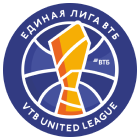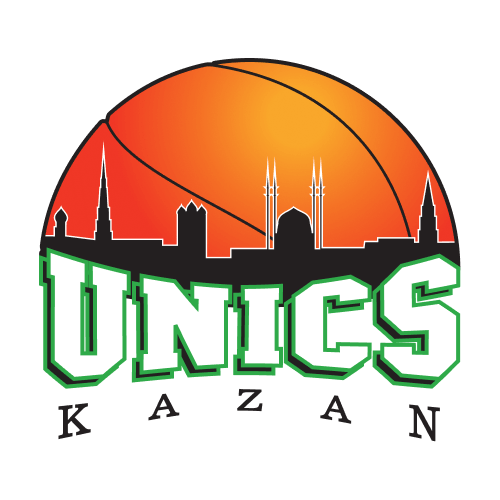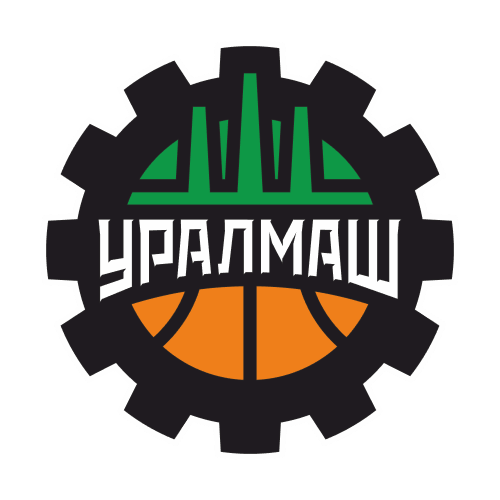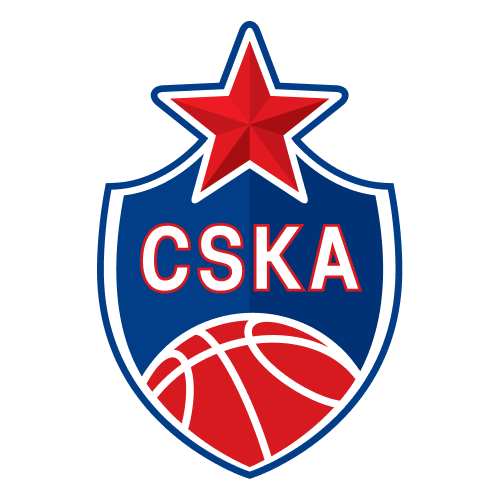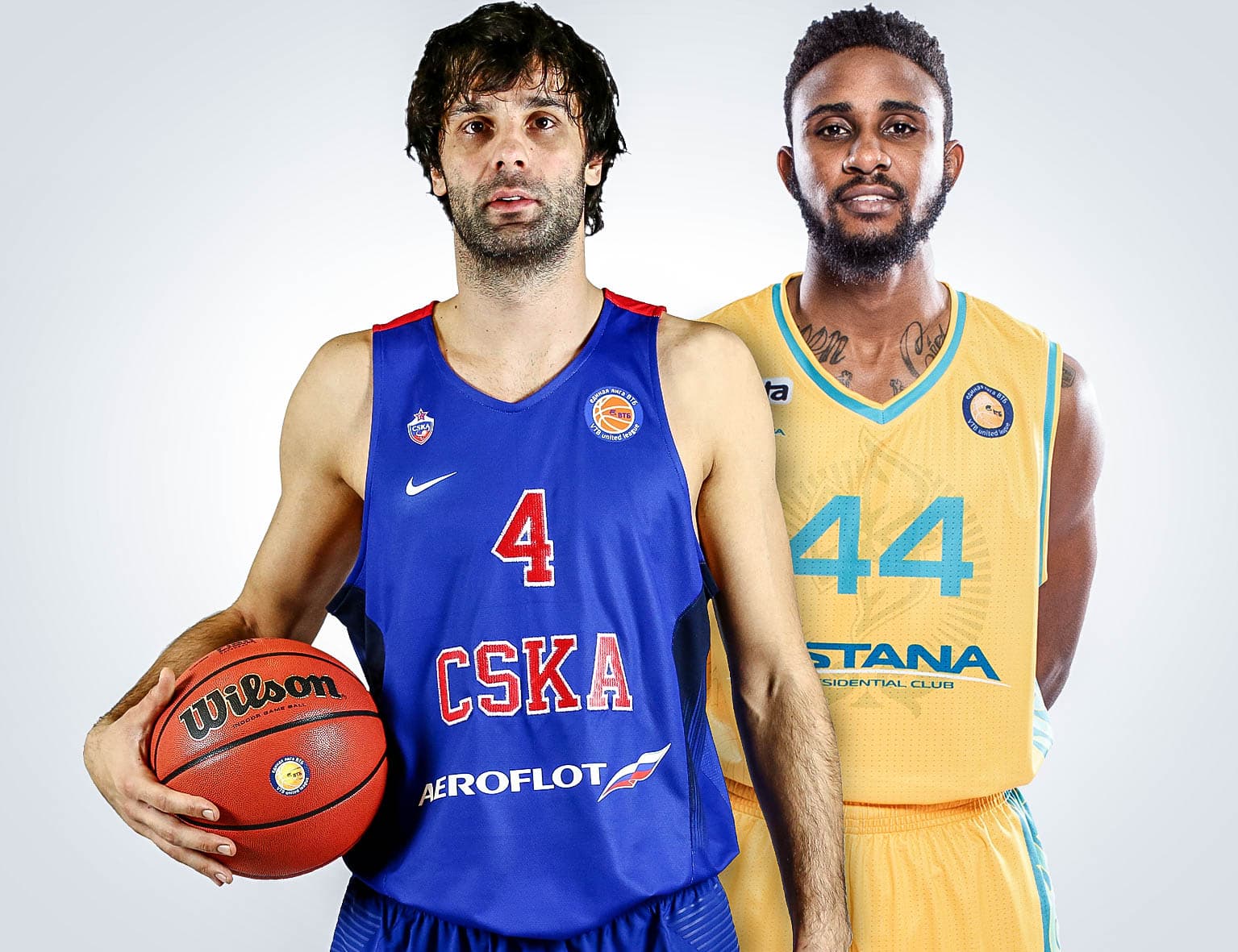Dimitris Itoudis vs. Ilias Papatheodorou, Nando De Colo and Milos Teodosic vs. Rob Lowery and Ian Miller.
Where & When
Game 1: USH CSKA, Moscow, Russia. 7:00 PM (7:00 MSK), May 5
Game 2: USH CSKA, Moscow, Russia. 2:30 PM (2:30 MSK), May 7
Game 3: SC Velotrek, Astana, Kazakhstan. 8:00 PM (5:00 MSK), May 10
Game 4: SC Velotrek, Astana, Kazakhstan. May 12 (if necessary)
Game 5: USH CSKA, Moscow, Russia. May 15 (if necessary)
Regular Season
CSKA: 1st place (22-2)
Astana: 8th place (9-15)
Head-to-Head
Round 1: CSKA – Astana, 81-63
Round 2: Astana – CSKA, 76-92
Backcourt
De Colo – Teodosic – Fridzon – Jackson – Higgins – M. Kulagin – D. Kulagin
vs.
Lowery – Miller – Katsivelis – Ergali – Murzagaliev – Shcherbak – Marchuk
It’s tough to say where CSKA has more depth: in the backcourt or frontcourt. But the backcourt probably gets a slight edge given the team’s two leaders are both guards. The Itoudis era at CSKA has been defined by the interaction and interchangeability of Nando De Colo and Milos Teodosic, who average a combined 27.8 points and 11.4 assists per game. Those stats become much more impressive once you realize that the two leaders average only a little above 20 minutes per game.
In fact, CSKA’s rotation may be the team’s greatest strength, allowing Itoudis to show extreme creativity with lineups and play calls, depending on the caliber of the opponent. If the perimeter shooting is cold, he can find someone to drive the ball. If the ball movement and tempo slows down, Itoudis can turn to De Colo for instant offense…
Of course, Astana can’t compete with CSKA’s depth. The Kazakh club is averaging 75.3 points per game this season with Miller, Lowery and Katsivelis combining for nearly half the team’s production. The rest of the team’s guards combined score about as much as Katsivelis with his 7.4 ppg. Assuming no miracle breakthrough in the postseason, Papatheodorou will need to limit his rotation or risk getting steamrolled by CSKA’s second unit of Fridzon, Jackson, Higgins and the Kulagin brothers.
Frontcourt
Hines – Augustine – Freeland – Antonov – Vorontsevich – Kurbanov – Khryapa
vs.
Krubally – Odom – Kaselakis – Ponomarev – Klimov – Zhigulin
While CSKA’s backcourt features tremendous versatility and players with very different strengths, the frontcourt is more uniform in its selection of similarly-skilled big men. Semyon Antonov, Victor Khryapa, Nikita Kurbanov, Andrey Vorontsevich: CSKA prefers point-forwards who can defend and score the ball. CSKA and elite defense have long been synonymous, but the club has surpassed its own lofty standards this season. Much of the credit goes to the forwards and big men, who can hold their own in the paint and on the perimeter. Even if Kurbanov and Vorontsevich allow someone to get inside, defensive pillar Kyle Hines is there to clean up any mess.
Astana can’t match the Army Men’s depth and Ousman Krubally and Rod Odom have little support inside. Nonetheless, Papatheodorou’s men do an impressive job on the offensive glass, averaging 12.3 boards per game, 2nd in the League. That brings to mind the days when Rasid Mahalbasic and Pat Calathes regularly cleaned up the glass in Astana.
Astana’s best bet may be to crash the glass against a CSKA team that sometimes struggles to rebound. Second-chance points could keep the underdog Kazakhs alive. At the same time, the Army Men know that if they can shut down Astana’s big men, their opponent will be largely neutralized inside. CSKA also takes a team approach to rebounding, which makes them much more difficult to stop.
Coach
Dimitris Itoudis vs. Ilias Papatheodorou
Itoudis and Papatheodorou are both Greek, lending some extra spice to the match-up. But there are other intriguing aspects to the coaching duel.
Itoudis certainly has more weapons. Blessed with one of the deepest rosters in Europe, Itoudis can make substitutions at will, allowing him to dictate the tempo and match-ups on the court. In fact, Nando De Colo leads the team in minutes with a measly 23 per game. At the same time, virtually every Astana leader plays at least 30 minutes per game.
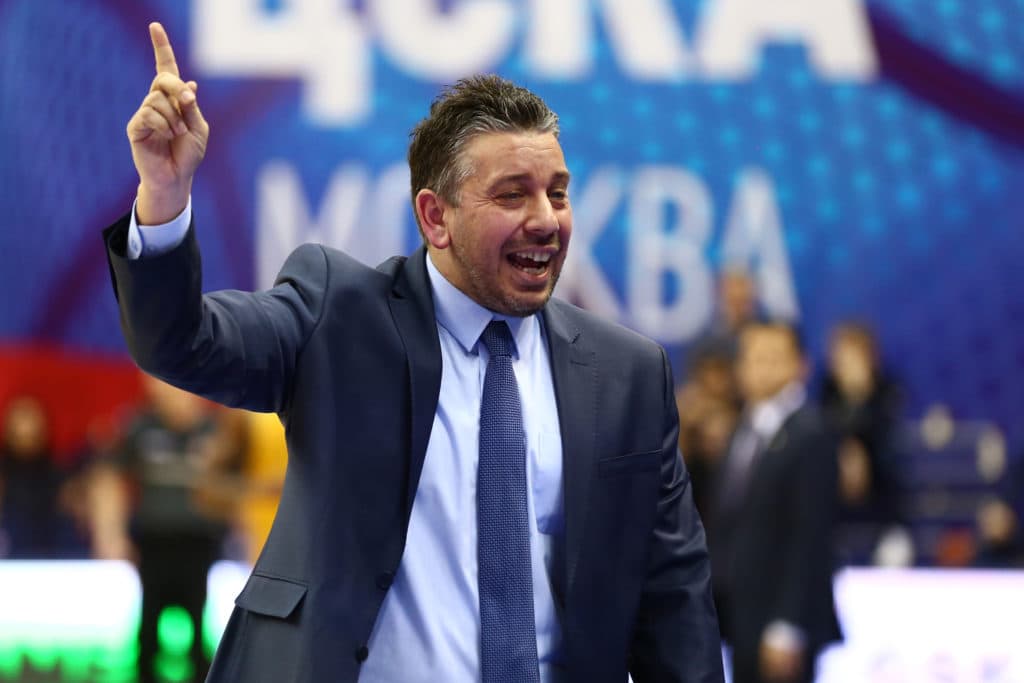
Astana will try to neutralize CSKA’s advantage with unorthodox coaching moves. Of course, there’s no denying CSKA’s talent, but Papatheodorou has earned a reputation as a talented, capable coach. While Itoudis has been with CSKA for three seasons and given access to the Army club’s impressive resources, his countryman has had to build Astana from scratch this season.
Bench
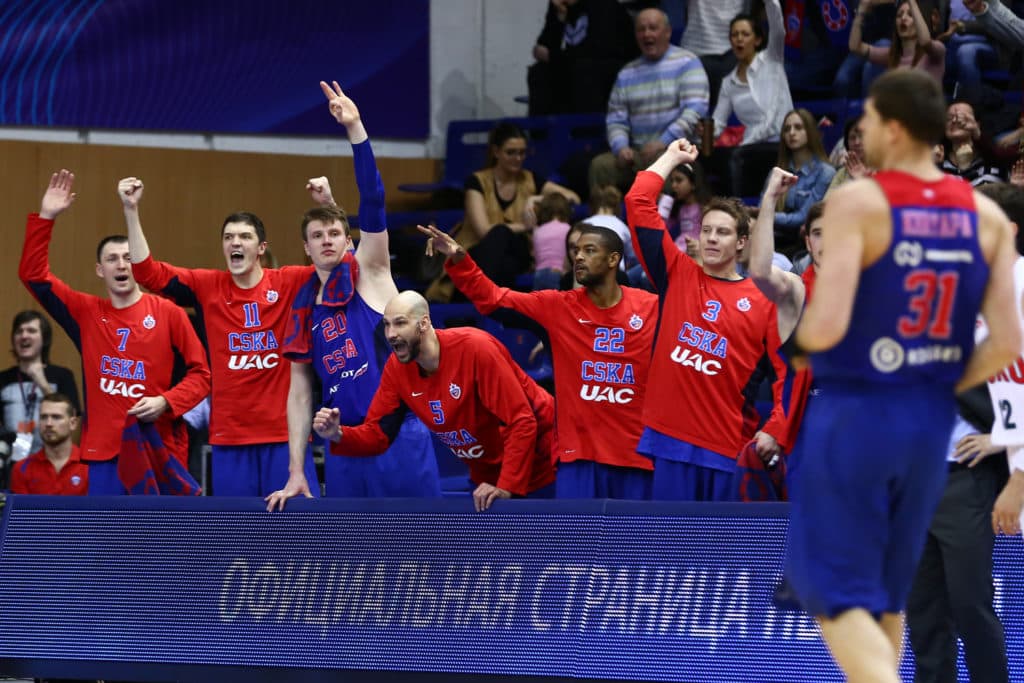
The Army Men win this battle, hands down. Take, for example, the first meeting between these two teams. Astana battled heroically for three quarters, but the leaders eventually ran out of steam. CSKA, meanwhile, spread out the playing time and had no trouble upping the tempo in the 4th quarter to secure the win. The Army Men’s bench ended up outscoring its counterpart, 51-28. As a result of the short and largely unproductive bench, Astana struggled down the stretch, losing five straight to finish the season. But the Kazakhs were always competitive, losing by only 3-5 points to Khimki and UNICS. The lack of depth was generally the biggest issue. That’s a sharp contrast to the Red-Blues, who had little trouble navigating a crowded United League and EuroLeague schedule.
Star
Nando De Colo vs. Rob Lowery
De Colo could have easily challenged for the scoring title if Itoudis hadn’t limited his minutes. CSKA wins as a team and rarely relies on a single player to take over and play 40 minutes. The Frenchman only played 30 minutes once (coincidentally, against Astana), scoring 18 points to go with eight assists. That’s the biggest threat when it comes to De Colo. Even if the 3-pointer isn’t dropping, he can drive the ball or starting finding open teammates. De Colo’s drive-and-kick (like fellow Frenchman Tony Parker) is a dangerous weapon for CSKA and one few opponents have been able to defuse.
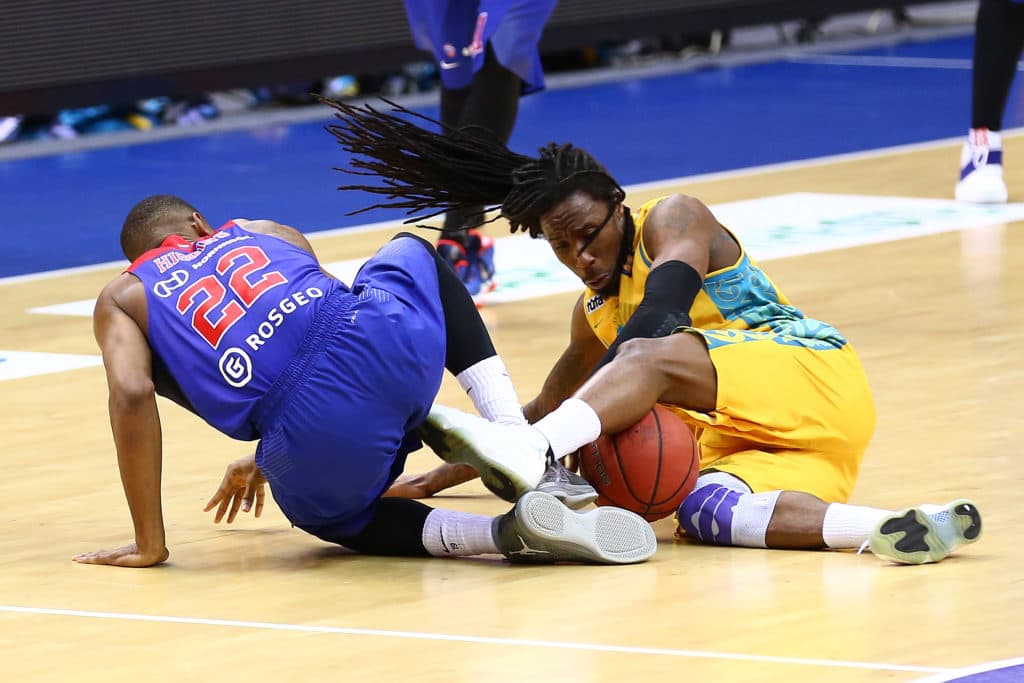
Lowery has only started in two games this season, but that’s pure formality. He’s top three in minutes on the team, beating out leading scorer Ian Miller, for example. Lowery is averaging 14.1 points+4.2 assists+1.8 steals, playing a Manu Ginobili-esque role for Astana: creative fury within a highly disciplined system. He had a similar role at VEF two seasons ago, but he’s developed even further under Papatheodorou.
X-Factor
Kyle Hines vs. Ousman Krubally
The potential for a duel inside between Hines and Krubally is very intriguing. These two centers have a lot of similarities. Both are relatively short for their position (198 cm vs. 202 cm), but incredibly strong. Despite Kurbanov’s continued development, Hines is the primary defensive stopper for CSKA down low. He can snag almost any rebound with his expansive wingspan and shut down any guards that wander into his path. Krubally is also in excellent condition. He leads Astana in rebounding and is coming off a 29-point, 13-rebound performance against Khimki in the final game of the regular season.
